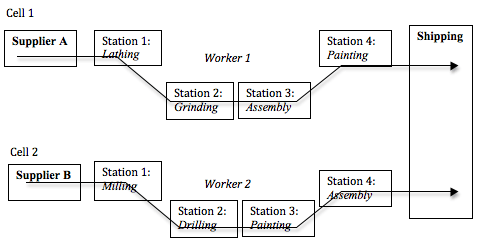| << Chapter < Page | Chapter >> Page > |
Business Fundamentals was developed by the Global Text Project, which is working to create open-content electronictextbooks that are freely available on the website http://globaltext.terry.uga.edu. Distribution is also possible viapaper, CD, DVD, and via this collaboration, through Connexions. The goal is to make textbooks available to the manywho cannot afford them. For more information on getting involved with the Global Text Project or Connexions email us atdrexel@uga.edu and dcwill@cnx.org.
Editor: Dr John Burnett (Daniels College of Business, University of Denver, USA)
Editor: Michael J Pesch (St Cloud University, USA) Reviewer: Ronald F Farina (Daniels College of Business, University of Denver, USA)
Supply chain management is the business function that coordinates and manages all the activities of the supply chain, including suppliers of raw materials, components and services, transportation providers, internal departments, and information systems. [link] illustrates a supply chain for providing packaged milk to consumers.

In the manufacturing sector, supply chain management addresses the movement of goods through the supply chain from the supplier to the manufacturer, to wholesalers or warehouse distribution centers, to retailers and finally to the consumer. For example, Apple, Inc uses sophisticated information systems to accept orders for custom-built computers from individual customers all over the world. Apple assembles the computers in Shanghai, China, to the customers’ specifications. It uses parts and components that are provided by outside suppliers who can deliver the right parts in the right quantity in a timely way to satisfy the immediate production schedule. The completed computers are flown from Shanghai by FedEx, reaching the end-user customers only a few days after the orders were placed. Apple’s supply chain allows it to provide fast delivery of high-quality custom computers at competitive prices.
Supply chain concepts also apply to the service sector, where service firms must coordinate equipment, materials, and human resources to provide services to their customers in a timely manner. For example, a retail store that sells electronic products may contract with an outside business to provide installation services to its customers. In many cases, the customer does not even know the installation was done by an outside contractor. Information and communication technologies such as global positioning systems (GPS), barcode technology, customer relationship management (CRM) databases, and the Internet allow service businesses to coordinate external and internal service suppliers to efficiently and effectively respond to customer demand.
The supply chain is not just a one way process that runs from raw materials to the end customer. Although goods tend to flow this way, important data such as forecasts, inventory status, shipping schedules, and sales data are examples of information that is constantly being conveyed to different links in the supply chain. Money also tends to flow “upstream” in the supply chain so goods and service providers can be paid.

Notification Switch
Would you like to follow the 'Business fundamentals' conversation and receive update notifications?